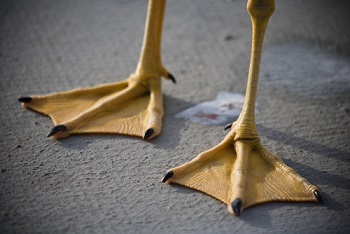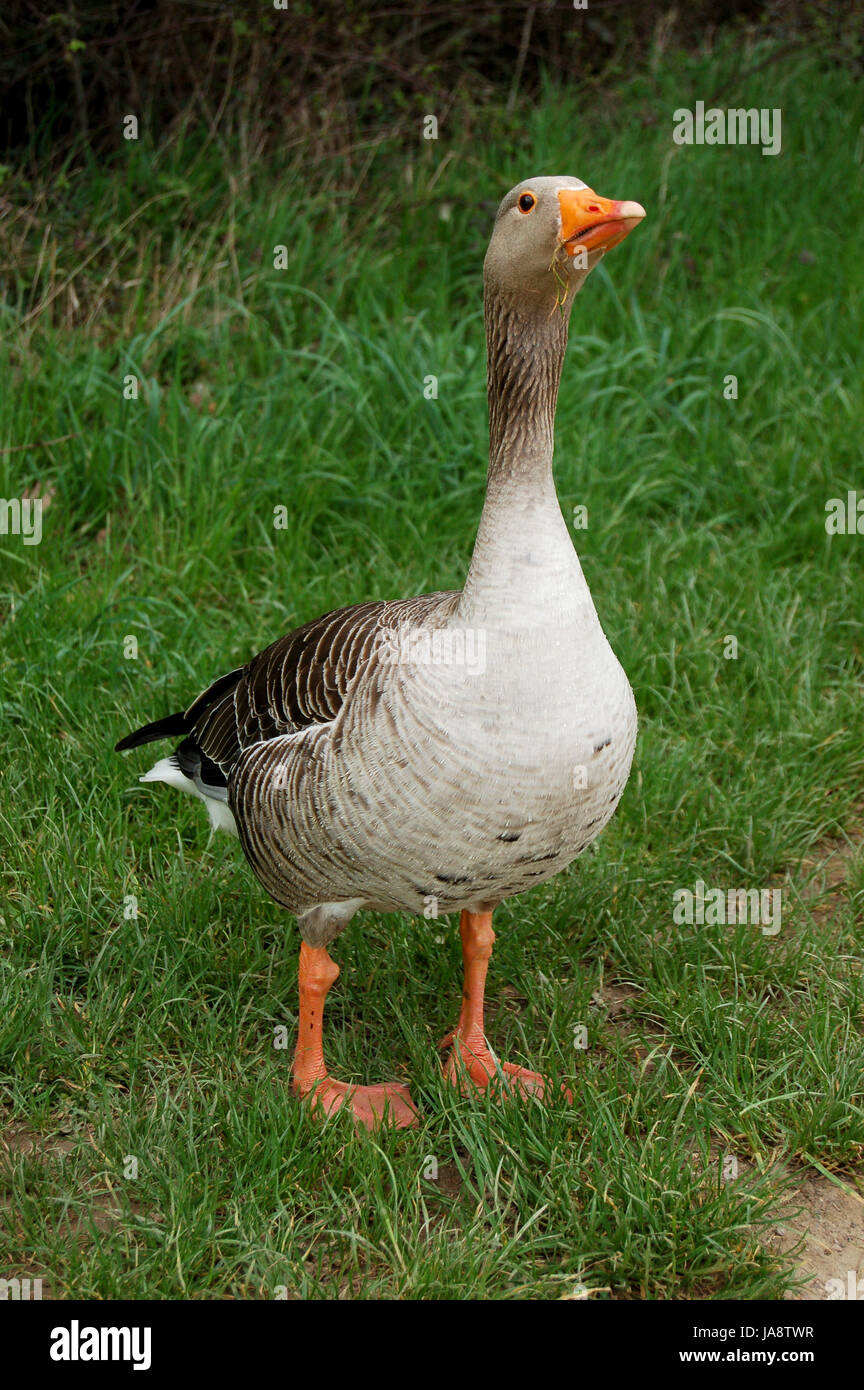

The Duck-billed Platypus has webbed feet and a large, rubbery snout. The Platypus is one of the few venomous mammals whereby the male Platypus has a spike on the hind foot which delivers a venom capable of causing severe pain to humans, they also use it to kill small animals in self defence. The Duck-billed Platypus (Ornithorhynchus anatinus) is a semi-aquatic mammal endemic to eastern Australia, including Tasmania. They usually nest in colonies and travel in large flocks made of many family units. Their most common predators are artic foxes and gull-like birds called jaegers. The snow goose feeds on roots, leaves and grasses, using their bills for digging up roots in thick mud. The name snow goose derives from the typically white plumage. Both white and dark varieties of this goose exist, with the latter often known as blue goose. This bird belongs to the genus Anser and the family Anatidae. It breeds north of the timberline in Greenland, Canada, Alaska, and the northeastern tip of Siberia, and spend winters in warm parts of North America from southwestern British Columbia through parts of the United States to Mexico. The snow goose (Anser caerulescens) is a species of goose native to North America. The otter is believed to be extinct in Liechtenstein, the Netherlands, and Switzerland. The European otter is the most widely distributed otter species being widely spread across Europe. It is a European member of the Mustelidae or weasel family and is typical of freshwater otters. The European Otter (Lutra lutra) is also known as the Eurasian River Otter, Common Otter and Old World Otter. When they are in the water, they dive and flap their wings as if they are flying underwater.Īs most penguin species do, they feed by shallow pursuit diving, using their webbed feet and strong flippers to propel them through the water at speeds up to 15-25 miles per hour. Penguins spend as much as 75% of their time underwater, searching for food in the ocean. However, unlike most birds, penguins are unable to fly. Penguins are birds with black and white feathers and a funny waddle.

It has webbed feet like most aquatic animals. The axolotl has also developed lungs which allow it to breathe oxygen at the surface of the water. It has several unique features that make it distinct from other amphibians. The Axolotl is a member of the salamander family and is closely related to the tiger salamander. It is often called the “Mexican Walking Fish”.

The Axolotl ( Ambystoma mexicanum) is a unique amphibian that can be found in Mexico. Their blood vessels are laid out very close to each other in their legs and feet in a network that allows the warm and cool blood to exchange heat. The reason ducks can swim in cold water is their amazing circulatory system. Their webbed feet act like paddles for the ducks. List of Animals with Webbed Feet Ducksĭucks are related to Geese and Swans in the Anatidae family.ĭucks have webbed feet, which are designed for swimming. It all depends on their environment and what activities they need to do to survive. So, there are a few reasons why some animals have webbed feet. The webbing helps them grip the branches better so they can climb up and down more easily. Some animals also have webbed feet because it helps them to climb trees. This makes it easier for them to walk or run without getting stuck. When their feet are webbed, it spreads out their weight more evenly, so they don’t sink as much. This is especially helpful for animals who live in areas where there is a lot of water, such as near rivers, lakes, or the ocean.Īnother reason why some animals have webbed feet is that it helps them move around in mud or soft sand. Webbed feet act like paddles in the water, which help propel the animal through the water. One reason is that it helps them swim better. There are a few reasons why some animals have webbed feet.


 0 kommentar(er)
0 kommentar(er)
